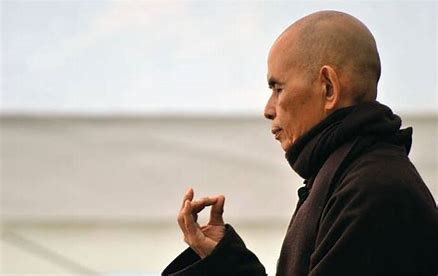The Power of Presence: Breathwork and Thich Nhat Hanh’s Mindfulness Poem

In a world that rarely slows down, the simple act of breathing often goes unnoticed. Yet, within our breath lies a profound power — the power to return to ourselves, to the present moment and to peace. Thich Nhat Hanh, the beloved Vietnamese Zen master, captured this beautifully in his mindfulness poem:
In; out,
Deep; slow,
Calm; ease,
Smile; release,
Present moment,
Wonderful moment.
At its core, this poem is more than words — it’s a practice. A breath-by-breath invitation to return home to the body, the self, the now. Each line pairs with the inhale and exhale, creating a rhythmic mantra that guides us through mindful breathing:
In; out – the awareness of the breath begins. Inhaling through the nose we recognise the life-giving force entering our lungs. Exhaling gently, we let go.
Deep; slow – we lengthen and deepen the breath. This activates the parasympathetic nervous system, signalling safety to the body. A slow breath is a message to the brain: there is no emergency.
Calm; ease – with each breath the tension held in the body begins to soften. The shoulders release, the jaw loosens. We offer ourselves the gift of ease, not through effort, but through presence.
Smile; release – Thich Nhat Hanh often spoke of the “half-smile,” a gentle turning up of the lips that reflects inner contentment. This small act signals kindness to the nervous system. On the exhale, we let go — of tension, of holding, of whatever we no longer need.
Present moment, wonderful moment – finally, we arrive. Not in the past, not in the future, but right here. This moment, just as it is, becomes enough. It is wonderful not because it is perfect, but because we are awake to it.
Breathwork takes this practice further. Intentional breathing patterns — such as box breathing, coherent breathing, or 4-7-8 breathing — anchor us in the body and regulate the nervous system. When paired with the mindfulness poem, breathwork becomes a bridge: from chaos to calm, from doing to being.
Modern science supports what ancient traditions have known for centuries: breathing with awareness improves heart rate variability, lowers cortisol levels and enhances emotional regulation. When we breathe deeply and slowly we increase oxygen flow reducing anxiety increasing focus. But more than this — we reclaim ourselves.
Try it: close your eyes, and breathe with the rhythm of the poem. Say the words silently as you inhale and exhale. Let each line be an anchor. Thich Nhat Hanh reminds us that peace is not a destination — it’s a practice. It begins with the breath. When we return to our breath, we return to life.
In, out, deep, slow…
Let that be your quiet revolution.